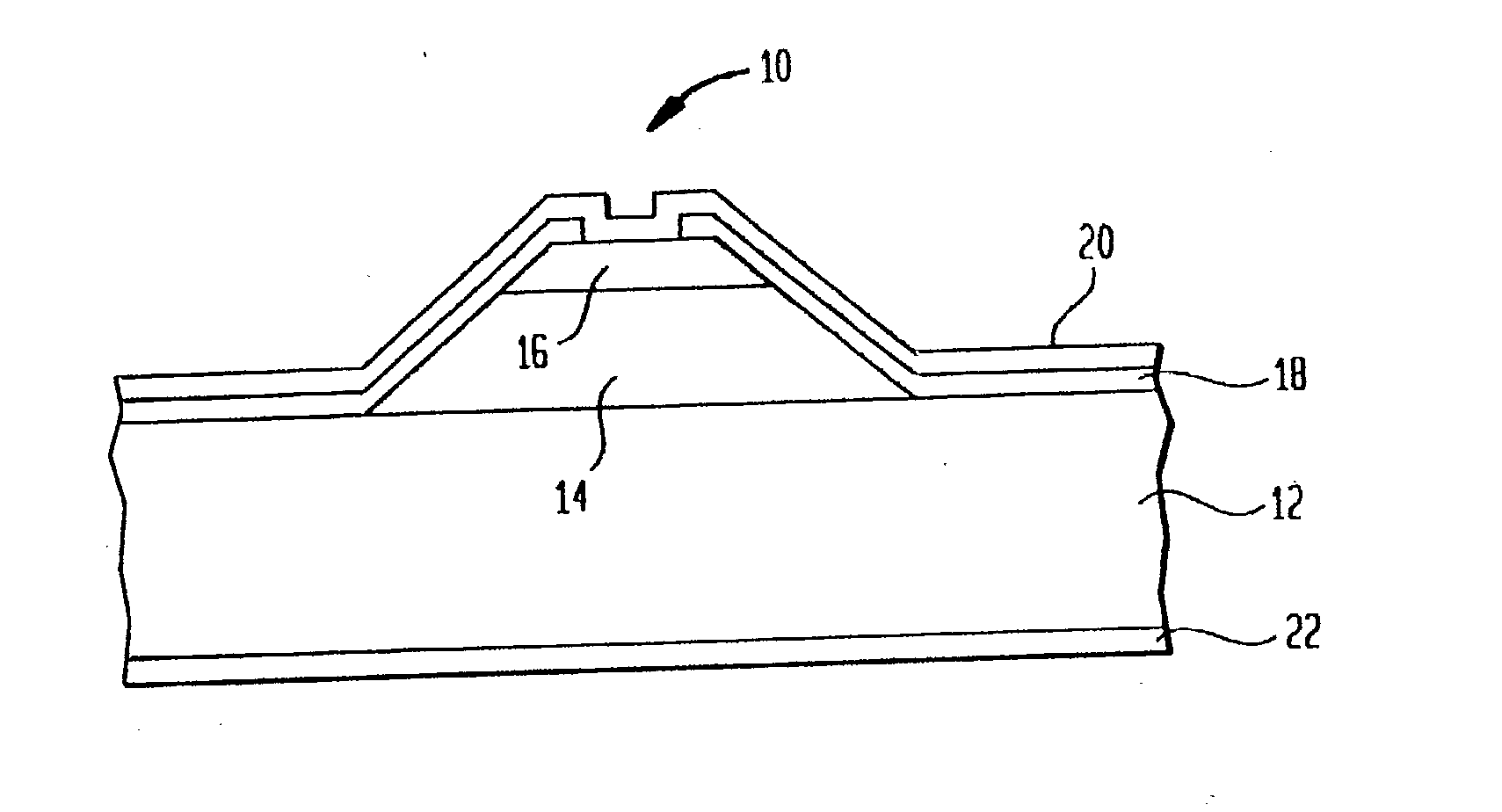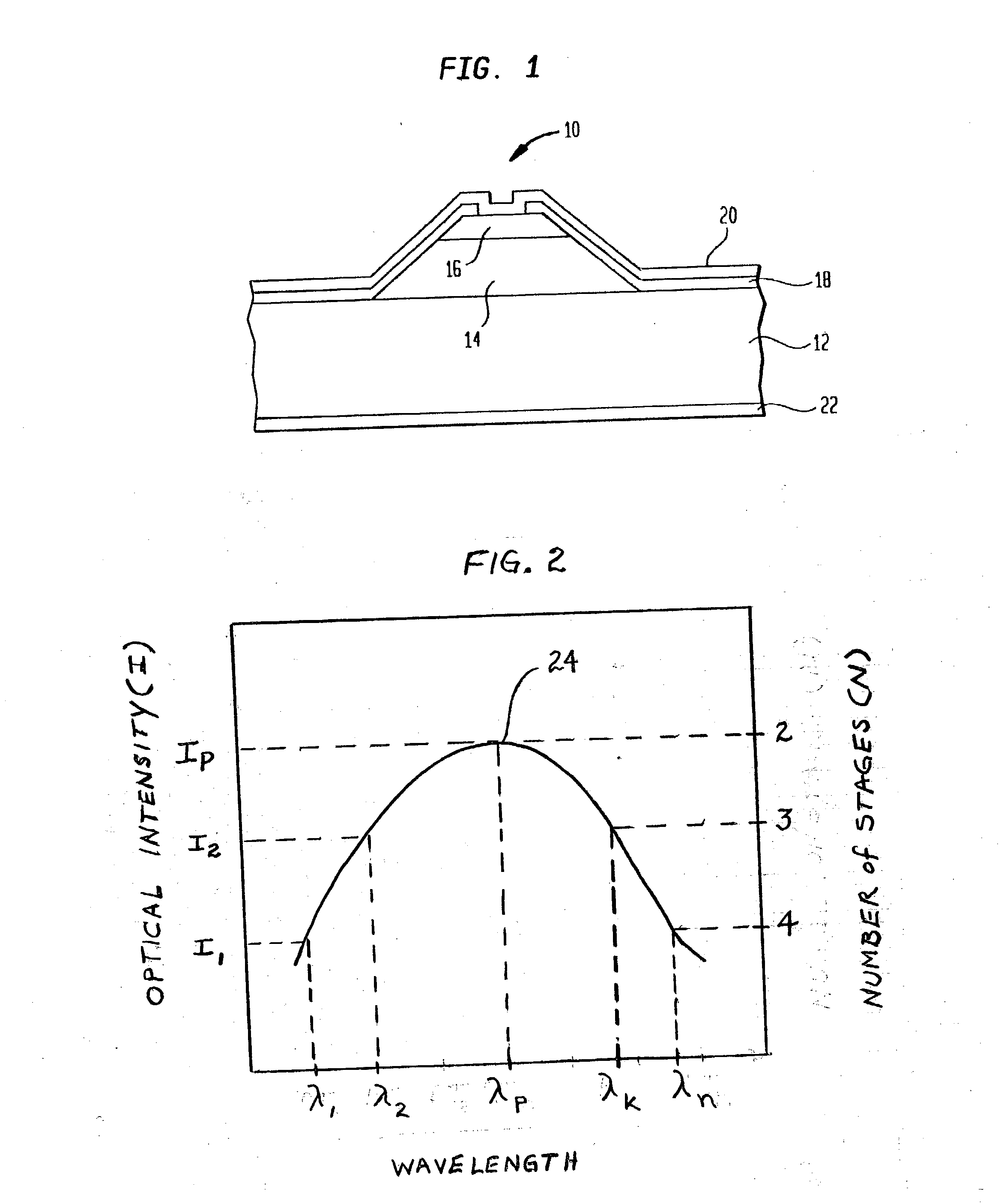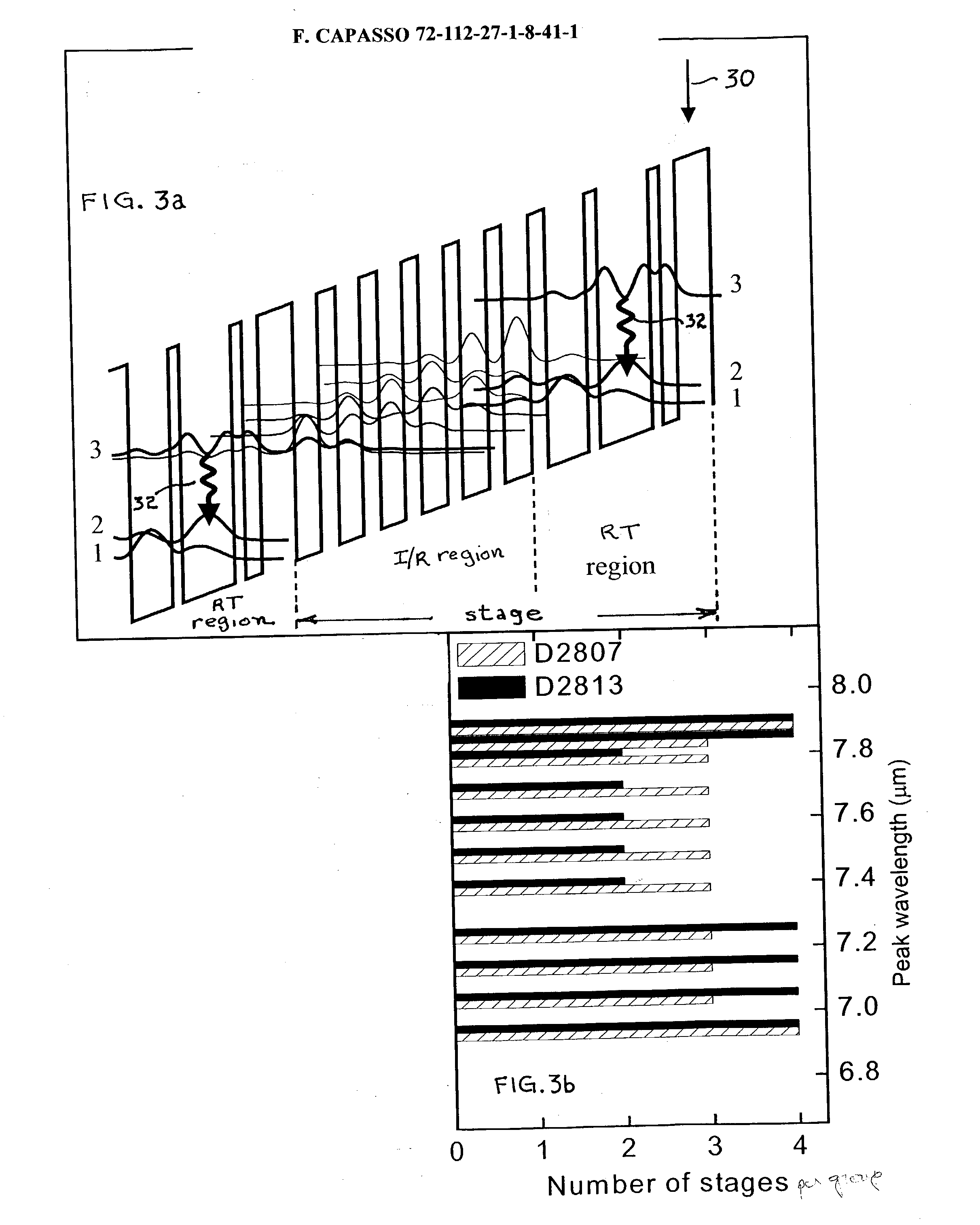Broadband cascade light emitters
a cascade light and wideband technology, applied in the direction of semiconductor lasers, laser output parameters control, laser details, etc., can solve the problems of inefficient transition and difficulty in optimizing both
- Summary
- Abstract
- Description
- Claims
- Application Information
AI Technical Summary
Benefits of technology
Problems solved by technology
Method used
Image
Examples
example
[0039] This example describes a Group III-V compound semiconductor, broadband ISB laser that was designed for operation at center wavelengths of 6.9 μm to 7.9 μm. Various materials, dimensions and operating conditions are provided by way of illustration only and, unless otherwise expressly stated, are not intended to limit the scope of the invention.
[0040] More specifically, the ISB laser of this example enabled us to achieve a small (about 4 cm−1) gain ripple across our target wavelength region and demonstrate the broadband cw operation of QC lasers. These lasers emitted simultaneously at many modes between 6.7 μm and 7.4 μm at temperatures ranging from 20 to 77 K.
[0041] The lasers were grown by Molecular Beam Epitaxy (MBE) using In0.53Ga0.47As and Al0.48In0.52As lattice matched to an InP substrate. The bottom cladding region 12 was formed by the low n-type doped (n˜2×1017 cm−3) InP substrate. A 600 nm thick n-doped (3×1016 cm−3) InGaAs layer followed by 35 stages (I / R and RT reg...
PUM
 Login to View More
Login to View More Abstract
Description
Claims
Application Information
 Login to View More
Login to View More - R&D
- Intellectual Property
- Life Sciences
- Materials
- Tech Scout
- Unparalleled Data Quality
- Higher Quality Content
- 60% Fewer Hallucinations
Browse by: Latest US Patents, China's latest patents, Technical Efficacy Thesaurus, Application Domain, Technology Topic, Popular Technical Reports.
© 2025 PatSnap. All rights reserved.Legal|Privacy policy|Modern Slavery Act Transparency Statement|Sitemap|About US| Contact US: help@patsnap.com



